Test Bank Maternal-Child Nursing Care Womens Health 2nd Edition Ward Hisley
$35.00
Test Bank Maternal-Child Nursing Care Womens Health 2nd Edition Ward Hisley
Get your degree with ease by using our files. We do not keep any logs and we do not log any information. What does this mean for you? This means, your order is completely anonymous and confidential. Part of our service allows you to purchase these files without anyone else knowing. There is no risk and you have nothing to lose. If you are using this very textin school right now, then you will need this nursing test bank to learn important core knowledge so you can be the ultimate nurse. Add this product to your cart and checkout to receive the download for your nursing test bank for Test Bank Maternal-Child Nursing Care Womens Health 2nd Edition Ward Hisley
Do you have any questions? Would you like a sample sent to you? Just send us an email at [email protected] (no spaces). We will respond as soon as possible.
Test Bank For Maternal-Child Nursing Care with Women’s Health Companion -Optimizing Outcomes for Mothers, Children, and Families 2nd Edition by Susan L. Ward, Shelton M. Hisley
Chapter 6: Human Sexuality and Fertility
MULTIPLE CHOICE
- The reproductive health nurse counsels a 17-year-old woman who is interested in initiating contraception. Which of the following would be a short-term positive outcome of the visit?
| A. | Able to describe how to obtain and use the contraceptive chosen |
| B. | Continued use and pregnancy prevention for 6 months |
| C. | Lack of side effects and complaints about the method after 3 months |
| D. | Voiced satisfaction with this method over 6 months |
ANS: A
Short-term outcomes include the patient’s ability to voice an understanding about the selected contraceptive method, voice an understanding of all information necessary to provide informed consent, and voice a comfort level with the use of the contraceptive method selected. Intermediate and long-term goals include the patient’s correct and consistent use of the selected contraceptive method, denial of adverse side effects, continued satisfaction with the selected contraceptive method, and consistent use of the contraceptive method and avoidance of pregnancy for the following year.
Cognitive Level: Evaluation/Evaluating
Content Area: Pediatrics/Maternity
Patient Needs: Health Promotion and Maintenance
Integrated Process: Teaching/Learning
Difficulty: Moderate
PTS: 1
- The clinic nurse is counseling a woman who had a Nexplanon rod implanted. The nurse reminds her that she will need an appointment to replace this birth control method in what time frame?
| A. | 12 months |
| B. | 24 months |
| C. | 36 months |
| D. | 48 months |
ANS: C
Nexplanon is a subdermal contraceptive that must be removed and replaced every 3 years if continued contraception is desired. The single-rod implant, which is inserted on the inner side of the woman’s upper arm, contains etonogestrel, which is a progestin.
Objective: 6-3
Reference:
Cognitive Level: Comprehension/Understanding
Content Area: Pediatrics/Maternity
Patient Needs: Health Promotion and Maintenance
Integrated Process: Teaching/Learning
Difficulty: Easy
PTS: 1
- A 24-year-old lactating woman asks about contraceptive options. The family planning clinic nurse recommends an oral contraceptive formulated with which ingredients?
| A. | Biphasic formulation |
| B. | Estrogen-progestin |
| C. | Progestin only |
| D. | Triphasic formulation |
ANS: C
Low-dose progestin-only contraceptive pills are often referred to as the “mini-pill” because they contain no estrogen. The mini-pill may be used during breastfeeding because it does not interfere with milk production.
Cognitive Level: Application/Applying
Content Area: Pediatrics/Maternity
Patient Needs: Physiological Integrity: Pharmacological and Parenteral Therapies
Integrated Process: Teaching/Learning
Difficulty: Moderate
PTS: 1
- A woman is interested in the transdermal contraceptive patch. She is 5’5” tall and weighs 200 lb (90.9 kg). What information should the nurse provide this patient as a priority?
| A. | It may cause skin irritation. |
| B. | She can’t use the patch at her weight. |
| C. | The patch is about 95% effective. |
| D. | Withdrawal bleeding occurs monthly. |
ANS: B
All answers are correct; however, because this woman is obese, the nurse needs to tell her that women weighing over 198 lb should not use the patch. This is because of concerns that excessive adipose tissue may be associated with inconsistent levels of hormonal absorption.
Cognitive Level: Application/Applying
Content Area: Pediatrics/Maternity
Patient Needs: Physiological Integrity: Pharmacological and Parenteral Therapies
Integrated Process: Teaching/Learning
Difficulty: Moderate
PTS: 1
- A nurse works with many women who self-identify as lesbian or bisexual. What action by the nurse would best address this population’s needs?
| A. | Aggressive screening for sexually transmitted infections |
| B. | Assisting with procedures related to conception |
| C. | Providing information on increased cancer risks |
| D. | Using questions that do not assume sexual orientation |
ANS: D
Lesbians and bisexuals are more likely to report poor physical or mental health compared with heterosexual women. Although the origins of this are not totally clear, one factor may relate to the homosexual/bisexual woman’s hesitancy in seeking health care. Nurses can greatly assist with this by being nonjudgmental and by using language and questions that do not assume sexual orientation. Sexually transmitted infections do occur in this population, although woman-to-woman transmission is lower than man-to-woman transmission. Some lesbian women do seek to become pregnant and bear children; they should be apprised of all available options. Lesbian women have increased risks for breast, endometrial, and ovarian cancer. Although all options are feasible, the option that has the potential to have the greatest impact is the one related to neutral language, which can be perceived as welcoming and accepting.
Cognitive Level: Application/Applying
Content Area: Pediatrics/Maternity
Patient Needs: Health Promotion and Maintenance
Integrated Process: Communication and Documentation
Difficulty: Moderate
PTS: 1
- The nurse working in a family practice clinic assesses women for sexual dysfunction. Which woman would the nurse assess as having a sexual dysfunction?
| A. | Complains about lack of arousal but still has intercourse |
| B. | Enjoys a platonic relationship with her “gentleman friend” |
| C. | Needs increased foreplay in order to reach an orgasm |
| D. | No desire for intimacy and is comfortable with the situation |
ANS: A
Sexual dysfunction is defined as any sexual situation that causes personal distress for the woman herself. If the woman is comfortable with the situation, there is no dysfunction. Dysfunction can occur in the physical, emotional, or relationship aspect of sexuality. The woman who complains of lack of arousal has a dysfunction even though she still is sexually active. The other women do not manifest complaints or personal distress about their situations.
Cognitive Level: Application/Applying
Content Area: Pediatrics/Maternity
Patient Needs: Health Promotion and Maintenance
Integrated Process: Nursing Process: Assessment
Difficulty: Moderate
PTS: 1
- A nurse is working with a patient who has the nursing diagnosis of altered sexuality patterns. What action by the nurse takes priority?
| A. | Assists with the physical exam |
| B. | Establishes a trusting relationship |
| C. | Reviews the past medical history |
| D. | Takes a comprehensive sexual history |
ANS: B
All options are important nursing actions, but without a trusting relationship, women (and men!) may be hesitant to share information.
Cognitive Level: Application/Applying
Content Area: Pediatrics/Maternity
Patient Needs: Health Promotion and Maintenance
Integrated Process: Communication and Documentation
Difficulty: Easy
PTS: 1
- A nurse is assessing a patient who complains of an inability to achieve orgasm. The patient was recently started on several new medications. Which one would the nurse evaluate as possibly contributing to this problem?
| A. | Atenolol (Tenormen) |
| B. | Clonidine (Catapres) |
| C. | Levothyroxine (Synthroid) |
| D. | Sertraline (Zoloft) |
ANS: D
Selective serotonin reuptake inhibitors such as sertraline can cause anorgasmia. Beta blockers (atenolol) can cause decreased libido. Clonidine can lead to decreased libido. Thyroid replacement hormones can cause menstrual irregularities with excessive doses.
Cognitive Level: Analysis/Analyzing
Content Area: Pediatrics/Maternity
Patient Needs: Physiological Integrity: Pharmacological and Parenteral Therapies
Integrated Process: Nursing Process: Assessment
Difficulty: Difficult
PTS: 1
- The nurse is assessing a sexually active heterosexual woman who does not use birth control. The nurse explains that the chance of becoming pregnant with each act of unprotected intercourse is what percentage?
| A. | 5–10% |
| B. | 10–15% |
| C. | 15–20% |
| D. | 20–25% |
ANS: C
The probability of becoming pregnant with each act of unprotected intercourse is approximately 15–20%.
Cognitive Level: Comprehension/Understanding
Content Area: Pediatrics/Maternity
Patient Needs: Health Promotion and Maintenance
Integrated Process: Teaching/Learning
Difficulty: Easy
PTS: 1
- A nurse is working with a young woman planning to become sexually active. She has the nursing diagnosis of knowledge deficit related to contraceptive choices. Which action by the patient would indicate that a priority goal has been met?
| A. | Can describe how to use method chosen and its side effects |
| B. | Is able to choose the “best fit” from contraceptive choices |
| C. | Obtains the contraceptive method previously desired |
| D. | Willing and able to explain contraceptive method to partner |
ANS: B
A woman often seeks contraception with a predetermined method in mind, which may or may not be the best “fit” for her lifestyle. Nurses should be able to explain the entire range of choices and help the woman find the method that will work best for her. Once the method is chosen, it is important to know how to use it properly and what the potential side effects are; however, this is not directly correlated to a knowledge deficit related to choices. The woman should be willing and able to explain the method to her partner once one is chosen.
Cognitive Level: Evaluation/Evaluating
Content Area: Pediatrics/Maternity
Patient Needs: Health Promotion and Maintenance
Integrated Process: Nursing Process: Evaluation
Difficulty: Difficult
PTS: 1
- A teenage girl wishes to obtain birth control and is interested in a diaphragm. What advice does the nurse provide?
| A. | Good choice because it is cheap |
| B. | Good choice because it is easy to use |
| C. | Poor choice because it is not effective |
| D. | Poor choice because it requires planning |
ANS: D
Because the diaphragm requires planning ahead, it may not be the best choice for adolescents because of their frequent “forgetfulness” and because it interferes with spontaneity and requires correct use with every act of intercourse. All barrier methods are fairly inexpensive. A diaphragm is easy to use for many women, after they learn to use it correctly. The effectiveness of a properly used diaphragm is about 84%, making it not the best choice for someone who would consider an unplanned pregnancy a disaster. This also makes it less appealing for teens.
Cognitive Level: Application/Applying
Content Area: Pediatrics/Maternity
Patient Needs: Health Promotion and Maintenance
Integrated Process: Teaching/Learning
Difficulty: Moderate
PTS: 1
- A woman who was recently fitted for a diaphragm is in the clinic for a follow-up visit. Which statement by the patient indicates that teaching was effective?
| A. | “An added benefit is that it contains my menstrual flow.” |
| B. | “Baby oil is a cheap and effective lubricant for the diaphragm.” |
| C. | “I leave the diaphragm in place for 6 hours after intercourse.” |
| D. | “This diaphragm will have to be replaced within 3 years.” |
ANS: C
The diaphragm should be left in place for 6 hours after intercourse. If intercourse occurs again before 6 hours have passed, the diaphragm must be left in place for 6 hours after the last act of intercourse. Diaphragms should not be used during a woman’s menstrual period. Oil-based lubricants such as baby oil can deteriorate the latex. The diaphragm should be replaced every 2 years.
Cognitive Level: Evaluation/Evaluating
Content Area: Pediatrics/Maternity
Patient Needs: Health Promotion and Maintenance
Integrated Process: Nursing Process: Evaluation
Difficulty: Moderate
PTS: 1
- A nurse is working with a young couple whose contraceptive choice is latex condoms. What statement by either partner indicates the need for more teaching?
| A. | Man: “I don’t carry these in my wallet in my pants pockets.” |
| B. | Man: “I make sure I am using the correct size of condom.” |
| C. | Woman: “I ask him to check the expiration dates each time.” |
| D. | Woman: “I buy nonoxynol-9 spermicide to use with condoms.” |
ANS: D
Nonoxynol-9 (N-9) spermicide is no longer recommended for use with condoms because of higher costs, shorter shelf life, and lack of additive benefit when compared to other spermicides. Also, N-9 can cause genital lesions and increases the woman’s risk of acquiring HIV and other sexually transmitted infections, especially when the condoms are used often. The other statements are correct. Condoms should be stored in a cool place, which makes placing them in wallets or pants pockets an incorrect action. Men should be sure to use the correct size. Condoms should be discarded if they are past their expiration date.
Cognitive Level: Evaluation/Evaluating
Content Area: Pediatrics/Maternity
Patient Needs: Health Promotion and Maintenance
Integrated Process: Nursing Process: Evaluation
Difficulty: Moderate
PTS: 1
- Which of the following women would the nurse advise to use a back-up contraceptive in addition to their birth control pills?
| A. | Being treated for tuberculosis |
| B. | Is a diabetic taking insulin |
| C. | On antibiotics for bronchitis |
| D. | Takes inhalers for asthma |
ANS: A
The effectiveness of oral contraceptive pills (birth control pills [BCPs]) can be decreased by several medications, including rifampin (Rifadin), isoniazid (Tubizid), barbiturates, and griseofulvin (Fulvicin-U/F). Other drugs that can decrease BCP effectiveness include acetaminophen (Tylenol), anticoagulants, and some anticonvulsants. The patient being treated for tuberculosis would most likely be taking either (or both) rifampin and isoniazid. The other patients would not have a decreased effectiveness of their BCPs due to medications, unless the diabetic patient had the disease for more than 20 years or has vascular complications.
Cognitive Level: Analysis/Analyzing
Content Area: Pediatrics/Maternity
Patient Needs: Physiological Integrity: Pharmacological and Parenteral Therapies
Integrated Process: Teaching/Learning
Difficulty: Difficult
PTS: 1
- A woman is being started on oral contraceptive pills. Which screening assessments should the nurse perform or assist with?
| A. | Blood pressure |
| B. | Breast exam |
| C. | Pelvic exam |
| D. | Weight |
ANS: A
The only routine screening needed before initiating oral contraceptive pills is blood pressure, unless the woman has other symptoms that need investigation.
Cognitive Level: Knowledge/Remembering
Content Area: Pediatrics/Maternity
Patient Needs: Physiological Integrity: Pharmacological and Parenteral Therapies
Integrated Process: Nursing Process: Assessment
Difficulty: Easy
PTS: 1
- A patient has been taught about the vaginal contraceptive ring. Which statement by the patient indicates that further teaching is needed?
| A. | “If it comes out at all, I need back-up contraception for a week.” |
| B. | “The exact position of the ring is not vital for its function.” |
| C. | “Using tampons is allowed with the vaginal contraceptive ring.” |
| D. | “Vaginal contraceptive rings are about 96% effective.” |
ANS: A
If the vaginal ring comes out, it can be washed with lukewarm water and reinserted. If it is out of the vagina for more than 3 hours, the woman will need a back-up method of contraception for the next 7 days. Her incorrect statement indicates she needs more teaching. The other statements about the vaginal contraceptive ring are correct.
Cognitive Level: Evaluation/Evaluating
Content Area: Pediatrics/Maternity
Patient Needs: Health Promotion and Maintenance
Integrated Process: Nursing Process: Evaluation
Difficulty: Moderate
PTS: 1
- The nurse is teaching a group of women about hormonal emergency contraception. Which of the following is not a benefit of this type of contraception?
| A. | Available in some forms over the counter |
| B. | Can be taken up to 120 hours after intercourse |
| C. | Over-the-counter version has only two pills |
| D. | Typically has no side effects |
ANS: D
Emergency contraception pills have side effects that include nausea and vomiting, abdominal pain, breast tenderness, headache, and fatigue. The other statements about the “morning-after pill” are correct and are benefits of emergency contraception.
Cognitive Level: Comprehension/Understanding
Content Area: Pediatrics/Maternity
Patient Needs: Health Promotion and Maintenance
Integrated Process: Teaching/Learning
Difficulty: Easy
PTS: 1
- A nurse in an emergency pregnancy clinic is evaluating women for the IUD method of emergency contraception. Which woman would not be considered a good candidate for this method of emergency contraception?
| A. | Does not wish to have an abortion |
| B. | Had sexual intercourse 4 days ago |
| C. | Took over-the-counter “morning-after pill” today |
| D. | Was raped by a stranger |
ANS: D
Women who are at high risk of sexually transmitted infections or pelvic infections should not use this form of emergency contraception. This includes women who have been raped. The other women would be appropriate candidates for emergency IUD contraception.
Cognitive Level: Analysis/Analyzing
Content Area: Pediatrics/Maternity
Patient Needs: Health Promotion and Maintenance
Integrated Process: Nursing Process: Assessment
Difficulty: Moderate
PTS: 1
- A student nurse is giving a patient an intramuscular Depo-Provera injection. Which action by the student would cause the instructor to intervene?
| A. | Assesses that the patient’s last period started 5–7 days ago |
| B. | Injects the medication deeply into the gluteus maximus |
| C. | Instructs the woman to return in 3 months for another shot |
| D. | Massages the site when the patient complains of pain |
ANS: D
The injection site should not be massaged, as this action can decrease the effectiveness of the medication. The other actions are correct.
Cognitive Level: Application/Applying
Content Area: Pediatrics/Maternity
Patient Needs: Physiological Integrity: Pharmacological and Parenteral Therapies
Integrated Process: Nursing Process: Implementation
Difficulty: Moderate
PTS: 1
- A patient has been taught about her Depo-Provera contraceptive injection. Which statement by the patient indicates that education has not been effective?
| A. | “Daily weight-bearing exercise will be important.” |
| B. | “I can become pregnant right after stopping the shots.” |
| C. | “I should add a calcium supplement to my diet.” |
| D. | “Hopefully I won’t have any periods while on this medication.” |
ANS: B
On average, ovulation begins within 10 months of discontinuing this medication, so women who are planning a pregnancy within the next year should probably use a different method of contraception. The other statements are correct. Due to possible decrease in bone density, weight-bearing exercise and calcium supplementation are important. Exercise will offset the possible weight gain also associated with this medication. Depo-Provera usually causes light or absent menstrual periods.
Cognitive Level: Evaluation/Evaluating
Content Area: Pediatrics/Maternity
Patient Needs: Physiological Integrity: Pharmacological and Parenteral Therapies
Integrated Process: Nursing Process: Evaluation
Difficulty: Moderate
PTS: 1
- An adolescent is in the family practice clinic to obtain birth control. She began menstruating 4 days ago and wants the Depo-Provera injection because of the convenience associated with the method. What action by the nurse is best?
| A. | Administer the injection as prescribed. |
| B. | Assist the teen in choosing another method. |
| C. | Document that education was completed. |
| D. | Obtain a urine sample for a pregnancy test. |
ANS: A
There is recent evidence that Depo-Provera causes bone density loss. The teenager should be educated about the range of appropriate birth control options and side effects and assisted to make a choice that is appropriate for her. The bone density loss often is reversed once the patient has stopped the medication. If the benefits (i.e., convenience; teen will not be consistent with other methods) outweigh the risks, the nurse should administer the injection as requested. If the benefits do not outweigh the risks, then the nurse can assist the teen to make another choice. Documentation should always be complete, and because this patient is within 5 to 7 days of menstruation, a pregnancy test is not required.
Cognitive Level: Application/Applying
Content Area: Pediatrics/Maternity
Patient Needs: Physiological Integrity :Pharmacological and Parenteral Therapies
Integrated Process: Teaching/Learning
Difficulty: Difficult
PTS: 1
- Prior to a sterilization procedure, which action by the nurse takes priority?
| A. | Obtaining informed consent from the partner |
| B. | Obtaining pre-approval for Medicaid patients |
| C. | Obtaining pre-approval from the insurer |
| D. | Obtaining the woman’s informed consent |
ANS: D
Because this is an invasive, permanent procedure, the nurse must obtain fully informed consent from the woman. Partner consent is not legally required. Pre-approval may or may not be required, but the priority is the patient’s informed consent.
Cognitive Level: Application/Applying
Content Area: Pediatrics/Maternity
Patient Needs: Safe and Effective Care Environment: Management of Care
Integrated Process: Communication and Documentation
Difficulty: Easy
PTS: 1
- A woman who is 10 weeks pregnant is being counseled by the nurse regarding her upcoming elective abortion. What information should the nurse provide?
| A. | “A local anesthetic will be injected into your vagina.” |
| B. | “The exact name of the procedure is dilation and extraction.” |
| C. | “They may use a seaweed product to dilate your cervix.” |
| D. | “You won’t need to have any cervical dilation at all.” |
ANS: C
Vacuum aspiration is the most common method for surgical abortion for pregnancies up to 12 weeks’ gestation. After 7 weeks, cervical dilation is often accomplished with laminaria, a dried seaweed product. For a pregnancy that is 5–7 weeks’ gestation, no dilation is needed. A local anesthetic is injected into the cervix in women who are between 8 and 12 weeks’ gestation because of the need for mechanical dilation. A dilation and extraction is the term for abortions performed during the second trimester.
Cognitive Level: Comprehension/Understanding
Content Area: Pediatrics/Maternity
Patient Needs: Physiological Integrity: Physiological Adaptation
Integrated Process: Teaching/Learning
Difficulty: Moderate
PTS: 1
- A woman had an elective surgical abortion 7 weeks ago and calls the clinic to ask when her menstrual periods should return. What response by the nurse is most appropriate?
| A. | “I will ask the physician to prescribe misoprostol (Cytotec).” |
| B. | “It usually takes 1 to 3 months for your menstrual periods to return.” |
| C. | “Please come in to the clinic today for a checkup.” |
| D. | “You should be seen in the emergency department.” |
ANS: C
Short-term complications from surgical abortions include fever, abdominal pain, prolonged or heavy bleeding with large clots, foul-smelling vaginal discharge, and no menstrual period within 6 weeks. The woman should be advised to come in for a checkup. Cytotec is used to help dilate the cervix and is inappropriate here. The woman does not need to go to the emergency department.
Cognitive Level: Application/Applying
Content Area: Pediatrics/Maternity
Patient Needs: Physiological Integrity: Physiological Adaptation
Integrated Process: Communication and Documentation
Difficulty: Moderate
PTS: 1
- A woman is in the clinic for a checkup 4 weeks after elective surgical abortion and has the nursing diagnosis of spiritual distress related to discrepancy between religious beliefs and reproductive choices. Which statement by the patient indicates that goals for this diagnosis have been met?
| A. | “I don’t ever want to go through anything like that again.” |
| B. | “I found out that my religion doesn’t forbid birth control.” |
| C. | “I talked to my minister and feel better about my choice.” |
| D. | “I will be much more careful about contraception now.” |
ANS: C
Abortion is an emotional decision and often brings about distress from a religious perspective. When the patient can state that she feels better about her choice, goals for resolving this diagnosis are being met or have been met. The other statements do not indicate this level of resolution.
Cognitive Level: Evaluation/Evaluating
Content Area: Pediatrics/Maternity
Patient Needs: Psychosocial Integrity
Integrated Process: Caring
Difficulty: Easy
PTS: 1
- A woman who desires a second-trimester medical abortion has been educated about the procedure, side effects, and follow-up. What statement by the patient indicates that additional teaching is needed?
| A. | “I understand that I might need several doses of the prostaglandins.” |
| B. | “I will get over-the-counter medication to treat any headache that I get.” |
| C. | “I will watch for dizziness when standing if I have vomiting or diarrhea.” |
| D. | “If I get a fever with chills, I should go to the emergency department.” |
ANS: D
Second-trimester medical abortions are associated with several side effects and may require multiple doses of prostaglandins to achieve the desired results. Side effects include headache, nausea, vomiting, diarrhea, fever, chills, dizziness, and cramping. Because fever and chills are a possible expected side effect, the woman would not need to go to the emergency department. The other statements are correct and indicate good understanding.
Cognitive Level: Evaluation/Evaluating
Content Area: Pediatrics/Maternity
Patient Needs: Physiological Integrity: Physiological Adaptation
Integrated Process: Teaching/Learning
Difficulty: Moderate
PTS: 1
- A nurse reads on a woman’s chart that she has a past history of Asherman syndrome. What does the nurse conclude about this patient?
| A. | Has had an abortion |
| B. | Has had multiple miscarriages |
| C. | Has never been pregnant |
| D. | Has a uterine abnormality |
ANS: A
Asherman syndrome is a complication of abortion and is characterized by the presence of endometrial adhesions or scar tissue. The other options are not related.
Cognitive Level: Analysis/Analyzing
Content Area: Pediatrics/Maternity
Patient Needs: Physiological Integrity: Physiological Adaptation
Integrated Process: Nursing Process: Evaluation
Difficulty: Moderate
PTS: 1
- After an abortion, when should the nurse advise the patient to return for a follow-up visit?
| A. | 2 weeks |
| B. | 4 weeks |
| C. | 6 weeks |
| D. | 8 weeks |
ANS: A
After all types of abortion the patient is instructed to return for a follow-up visit at 2 weeks.
Cognitive Level: Knowledge/Remembering
Content Area: Pediatrics/Maternity
Patient Needs: Physiological Integrity: Physiological Adaptation
Integrated Process: Teaching/Learning
Difficulty: Easy
PTS: 1
- A nurse is reviewing a 36-year-old woman’s chart. The woman has the diagnosis of infertility. What does the nurse conclude about this woman?
| A. | Has a medical condition that prevents pregnancy |
| B. | Has been attempting to get pregnant for 12 months |
| C. | Has delayed pregnancy and childbirth for too long |
| D. | Has not conceived in 6 months of actively trying |
ANS: D
Infertility is diagnosed if a woman age 34 or younger has not conceived within 12 months of actively trying. For women 35 and older, the timeframe decreases to 6 months. The other statements are not valid conclusions about this patient.
Cognitive Level: Knowledge/Remembering
Content Area: Pediatrics/Maternity
Patient Needs: Health Promotion and Maintenance
Integrated Process: Nursing Process: Assessment
Difficulty: Easy
PTS: 1
- During the initial visit with a couple in the infertility clinic, what action by the nurse is best to promote a trusting relationship?
| A. | Explain the process of a workup and its sensitive nature. |
| B. | Give written information with a timeline of testing. |
| C. | Go over the cost of a workup and insurance coverage. |
| D. | Ask the couple if they have considered adoption as an alternative option. |
ANS: A
Providing an overview of the infertility workup process gives couples the information they need to make an informed decision. Because of the sensitive nature of this condition, some people may not be willing to commit to the time, expense, and involvement needed for a successful workup. To best facilitate a trusting relationship, the nurse should give the couple this information in the initial visit so there will be no surprises and so the couple can make an informed choice after considering their comfort level with the process. Written information is important after verbal explanations are given and after the nurse assesses the couple’s ability to read and understand the information. Cost is an important factor but not the priority. Although a discussion about adoption may be appropriate at a later point during the infertility evaluation process, this is not the best initial strategy to promote a trusting relationship with the couple.
Cognitive Level: Application/Applying
Content Area: Pediatrics/Maternity
Patient Needs: Health Promotion and Maintenance
Integrated Process: Communication and Documentation
Difficulty: Moderate
PTS: 1
- A nurse is explaining that a woman will undergo follicular monitoring to evaluate her response to ovulation induction. For what test does the nurse prepare her?
| A. | 3-D ultrasound and color flow Doppler |
| B. | Endometrial biopsy |
| C. | Hysterosalpingography |
| D. | Laparoscopy |
ANS: A
A 3-D ultrasound and color flow Doppler provides visualization of the pelvic structures and provides a means of follicular monitoring if a woman is undergoing ovulation induction. An endometrial biopsy is used to assess the endometrial response to progestin. A hysterosalpingogram provides visualization of the interior dimensions of the uterine cavity and fallopian tubes. A laparoscopy allows direct visualization of the internal pelvic structures.
Cognitive Level: Application/Applying
Content Area: Pediatrics/Maternity
Patient Needs: Physiological Integrity: Reduction of Risk Potential
Integrated Process: Teaching/Learning
Difficulty: Moderate
PTS: 1
- A woman is having hysterosalpingography and begins complaining of severe left shoulder pain. What action by the nurse is best?
| A. | Administer morphine sulfate, 1–2 mg intravenously. |
| B. | Ask the patient if she took a nonsteroidal anti-inflammatory drug (NSAID) prior to the procedure. |
| C. | Determine exactly where the woman is in her monthly cycle. |
| D. | Inform the physician so the procedure can be stopped. |
ANS: B
During this procedure, women should be told that they may experience moderate to severe cramping and shoulder pain from subdiaphragmatic gas collection. This symptom is usually prevented by administering an NSAID, such as ibuprofen (Motrin), 30 minutes to 1 hour before the procedure. The nurse should assess if the woman has taken an NSAID prior to the procedure. Morphine sulfate is not warranted, nor is stopping the procedure. Although the test is performed during a specific part of the woman’s monthly cycle (during the follicular phase to prevent possible termination of an early pregnancy), the side effects will not be different in other phases.
Cognitive Level: Application/Applying
Content Area: Pediatrics/Maternity
Patient Needs: Physiological Integrity: Physiological Adaptation
Integrated Process: Nursing Process: Assessment
Difficulty: Difficult
PTS: 1
- A woman is being treated for infrequent ovulation. The nurse should educate her about what medication?
| A. | Clomiphene citrate (Clomid) |
| B. | Chlorambucil (Leukeran) |
| C. | Estradiol (Estrace) |
| D. | Follicle-stimulating hormone (FSH) |
ANS: A
Clomid is used to stimulate follicle development in women who are anovulatory or who ovulate infrequently. Leukeran is used to treat leukemias and lymphomas. Estrace is often prescribed to treat the symptoms of menopause. FSH is a hormone, often used to supplement the woman’s levels of this hormone.
Cognitive Level: Application/Applying
Content Area: Pediatrics/Maternity
Patient Needs: Physiological Integrity: Pharmacological and Parenteral Therapies
Integrated Process: Teaching/Learning
Difficulty: Moderate
PTS: 1
- A woman is receiving clomiphene citrate (Clomid). What assessment finding warrants immediate intervention by the nurse?
| A. | Chest pain worse with inspiration |
| B. | Complaints of anxiety and depression |
| C. | Headache and bilateral eye pain |
| D. | Increase in blood pressure of 10% |
ANS: A
Ovarian hyperstimulation is a serious complication that can occur with ovulation induction (the purpose of giving Clomid). The signs and symptoms include marked ovarian enlargement, ascites with or without pain, and pleural effusion. A common manifestation of pleural effusion is pleuritic chest pain such as described by the patient. The other complaints are not related to Clomid use and, in fact, anxiety, depression, and emotional instability are common to the dramatic hormonal alterations that occur in patients undergoing treatment.
Cognitive Level: Analysis/Analyzing
Content Area: Pediatrics/Maternity
Patient Needs: Physiological Integrity: Pharmacological and Parenteral Therapies
Integrated Process: Nursing Process: Implementation
Difficulty: Difficult
PTS: 1
- A woman in the infertility clinic is concerned that her religion may object to assisted reproductive technologies. Which process should the nurse explore with the woman as possibly acceptable?
| A. | FET (frozen embryo transfer) |
| B. | GIFT (gamete intrafallopian transfer) |
| C. | IVF-ET (in vitro fertilization-embryo transfer) |
| D. | ZIFT (zygote intrafallopian transfer) |
ANS: B
During the GIFT procedure, oocytes are harvested from the ovary and placed into a catheter along with washed, motile donor or partner sperm. The oocytes and sperm are then injected into the fallopian tubes through a laparoscope. Fertilization takes place in the fallopian tube. Because fertilization occurs inside the woman’s body, this procedure may be more acceptable to adherents of certain religious groups.
Cognitive Level: Application/Applying
Content Area: Pediatrics/Maternity
Patient Needs: Physiological Integrity: Physiological Adaptation
Integrated Process: Nursing Process: Implementation
Difficulty: Moderate
PTS: 1
- A nurse is counseling a couple about fertility prior to the husband beginning chemotherapy for cancer. The couple wish to delay childbirth until the husband is in remission. What information from the nurse is most accurate?
| A. | “Donor sperm are usually used in cases such as yours.” |
| B. | “Have you considered cryopreservation of your sperm?” |
| C. | “Most chemotherapeutic drugs don’t affect fertility.” |
| D. | “You shouldn’t wait, because remission may not occur.” |
ANS: B
Many chemotherapeutic drugs affect fertility. Cryopreservation, or freezing, is used to store sperm (or ovarian tissue) for use later. This might be a viable option for this couple, and the nurse should investigate it with them. The other statements are misleading, and in the case of telling the couple that remission may not occur, will not help establish a trusting relationship.
Cognitive Level: Application/Applying
Content Area: Pediatrics/Maternity
Patient Needs: Physiological Integrity: Physiological Adaptation
Integrated Process: Nursing Process: Assessment
Difficulty: Moderate
PTS: 1
- A woman asks the nurse about taking chasteberry tree supplements. What response by the nurse is best?
| A. | “Herbal supplements have no side effects.” |
| B. | “There are no scientific data supporting the use of this supplement.” |
| C. | “This herb is known to promote ovulation.” |
| D. | “Try it first, as herbs are inexpensive.” |
ANS: B
Chasteberry tree has been used for fertility, as it is believed to promote ovulation. However, there are no scientific data to support its use. All herbal supplements have side effects. Herbs are certainly less expensive than medications and assistive reproductive technology, but this is not the best answer because the patient needs to know about the lack of scientific evidence in order to make an informed choice.
Cognitive Level: Application/Applying
Content Area: Pediatrics/Maternity
Patient Needs: Physiological Integrity: Pharmacological and Parenteral Therapies
Integrated Process: Teaching/Learning
Difficulty: Moderate
PTS: 1
- A woman is tracking her basal body temperature and is having inconsistent results. When assessing the patient, the nurse discovers that the patient has seasonal allergies. The nurse needs to assess for what further information?
| A. | Any over-the-counter allergy medications taken |
| B. | How long the patient has suffered from allergies |
| C. | Signs and symptoms the patient has with her allergies |
| D. | What grasses, trees, molds, and pollens affect her |
ANS: A
Many over-the-counter sinus and allergy medications contain antipyretics, which would affect the woman’s temperature readings. The other options are not relevant.
Cognitive Level: Application/Applying
Content Area: Pediatrics/Maternity
Patient Needs: Health Promotion and Maintenance
Integrated Process: Nursing Process: Assessment
Difficulty: Difficult
PTS: 1
- A woman with hypertension is experiencing infertility. After reviewing her medication list, which medication does the nurse advise the woman to discuss with her primary care provider?
| A. | Atenolol (Tenormin) |
| B. | Enalapril (Vasotec) |
| C. | Isosorbide dinitrate (Isordil) |
| D. | Methyldopa (Aldomet) |
ANS: D
Methyldopa can cause amenorrhea and possibly interfere with fertility. Beta blockers (atenolol) can cause decreased libido, but that would not physically interfere with fertility. Isordil and enalapril do not affect fertility.
Cognitive Level: Application/Applying
Content Area: Pediatrics/Maternity
Patient Needs: Physiological Integrity: Pharmacological and Parenteral Therapies
Integrated Process: Nursing Process: Implementation
Difficulty: Moderate
PTS: 1
- The nurse has educated a woman about bromocriptine mesylate (Parlodel). Which statement by the patient indicates that she needs more teaching about this drug?
| A. | “I may get a metallic taste in my mouth when using this drug.” |
| B. | “My endometriosis will regress with this medication.” |
| C. | “Some side effects include vomiting, headache, and dizziness.” |
| D. | “This medication normalizes follicle-stimulating hormone.” |
ANS: B
Parlodel improves the release of follicle-stimulating hormone and luteinizing hormone, both of which help restore ovulation. Increased progesterone released by the corpus luteum supports early pregnancy. Side effects include vomiting, headache, dizziness, and a metallic taste in the mouth, among others. GnRh antagonists such as cetrorelix acetate (Cetrotide) reduce the extent of endometriosis.
Cognitive Level: Evaluation/Evaluating
Content Area: Pediatrics/Maternity
Patient Needs: Physiological Integrity: Pharmacological and Parenteral Therapies
Integrated Process: Nursing Process: Evaluation
Difficulty: Difficult
PTS: 1
- A woman has been taking progesterone via intramuscular injection. She calls the clinic to complain of swollen ankles. What response by the nurse is best?
| A. | Advise her to come to the clinic for an EKG. |
| B. | Assess how much sodium is in her daily diet. |
| C. | Have her go to the nearest emergency department. |
| D. | Reassure her that this is a common side effect. |
ANS: D
Common side effects of progesterone include nausea, weight gain, and fluid retention. The nurse should reassure the patient. There is no need for the patient to have an EKG or go to the emergency department. Assessing sodium intake may be helpful, but first the nurse should reassure the woman.
Cognitive Level: Application/Applying
Content Area: Pediatrics/Maternity
Patient Needs: Physiological and Parenteral Therapies
Integrated Process: Teaching/Learning
Difficulty: Moderate
PTS: 1
- A woman is in the clinic complaining of frequent constipation. During the assessment, the patient states that she has been trying to conceive for many months. Which of the following should the nurse ask this patient about using?
| A. | Bisocodyl (Dulcolax) suppositories |
| B. | Fleet enemas |
| C. | Psyllium (Metamucil) |
| D. | Senna (Senekot) |
ANS: D
Senna is in a group of herbs called anthraquinone laxatives, which should be avoided when trying to conceive. The other items do not appear to have an effect on conception.
Cognitive Level: Application/Applying
Content Area: Pediatrics/Maternity
Patient Needs: Physiological Integrity: Pharmacological and Parenteral Therapies
Integrated Process: Nursing Process: Assessment
Difficulty: Difficult
PTS: 1
MULTIPLE RESPONSE
- Masters and Johnson described the four phases of human sexual response. Which phases did they include? (Select all that apply.)
| A. | Excitement |
| B. | Orgasm |
| C. | Plateau |
| D. | Resolution |
| E. | Response |
ANS: A, B, C, D
The four phases of human sexual response described by Masters and Johnson are excitement, plateau, orgasm, and resolution. Response is not a phase.
Cognitive Level: Knowledge/Remembering
Content Area: Pediatrics/Maternity
Patient Needs: Health Promotion and Maintenance
Integrated Process: Teaching/Learning
Difficulty: Easy
PTS: 1
- A nurse is working with women and issues of reproductive health practices to help meet the National Health Goals related to reproductive life planning. Which goals are included in this document? (Select all that apply.)
| A. | Increase the number of private pharmacies that supply emergency contraception. |
| B. | Increase the proportion of subsequent births to 18 months from 12 months. |
| C. | Increase the proportion of young males who receive reproductive health care. |
| D. | Reduce the number of publicly funded family planning clinics that offer abortion. |
| E. | Reduce the proportion of women with unplanned pregnancy despite contraception. |
ANS: C, E
Several of the National Health Goals are related to reproductive life planning. Two of them include increasing the proportion of young males who receive reproductive health services and reducing the proportion of women experiencing unplanned pregnancies despite using contraception. Another goal is to increase the number of publicly funded family planning clinics (not private pharmacies) that offer the full range of FDA-approved methods of contraception, including emergency contraception, on site. Another goal is to decrease the proportion of pregnancies conceived within 18 months of a previous birth.
Cognitive Level: Knowledge/Remembering
Content Area: Pediatrics/Maternity
Patient Needs: Health Promotion and Maintenance
Integrated Process: Nursing Process: Planning
Difficulty: Difficult
PTS: 1
- A couple is interested in fertility-awareness-based (FAB) family planning. The nurse should advise them about what drawbacks that accompany this method? (Select all that apply.)
| A. | Depends on tracking cycles on a calendar |
| B. | Less than 50% effective in family planning |
| C. | May interfere with sexual spontaneity |
| D. | Requires months of charting cycles before use |
| E. | Requires a lot of motivation and education |
ANS: C, D, E
The FAB method of family planning is based on identifying the woman’s fertile periods and abstaining or using other methods of contraception when she is fertile. This method requires motivation, extensive education, and commitment to be used successfully. The couple may need to chart cycles and symptoms of fertility for months before initiating this method. There are several ways to track fertility, including using a calendar or rhythm method, the standard days method, the cervical mucus method, the basal body temperature method, and the symptothermal method that combines basal body temperature with other physical signs. When used correctly and consistently, this method is about 75% effective.
Cognitive Level: Application/Applying
Content Area: Pediatrics/Maternity
Patient Needs: Health Promotion and Maintenance
Integrated Process: Teaching/Learning
Difficulty: Moderate
PTS: 1
- The clinic nurse obtains a history from women who wish to use a cervical cap as their method of contraception. The nurse assesses for relative or absolute contraindications to this contraceptive device, including which of the following? (Select all that apply.)
| A. | Patient is a commercial sex worker. |
| B. | Patient has history of an abnormal Pap test. |
| C. | Patient has human papillomavirus infection. |
| D. | Patient has silicone allergy. |
| E. | Patient is nulliparous. |
ANS: A, B, C, D
Certain women are not suitable candidates for the cervical cap. Patients who have a history of toxic shock syndrome, pelvic inflammatory disease, cervicitis, papillomavirus infection, a previous abnormal Pap test or cervical cancer, undiagnosed vaginal bleeding, or a silicone allergy should choose another contraceptive method. In addition, women who have an abnormally short or long cervix may not be able to use a cervical cap satisfactorily. Because the cervical cap can cause irritation, it is not advisable for women who are at high risk for HIV, such as commercial sex workers. Parity has no bearing on suitability for using this device.
Cognitive Level: Application/Applying
Content Area: Pediatrics/Maternity
Patient Needs: Health Promotion and Maintenance
Integrated Process: Nursing Process: Assessment
Difficulty: Easy
PTS: 1
- The family planning clinic nurse reviews the signs and symptoms of toxic shock syndrome (TSS) with a patient who is being fitted for a diaphragm. The nurse explains that the patient should promptly seek medical attention if she develops which of the following manifestations? (Select all that apply.)
| A. | Develops a generalized red rash |
| B. | Develops a fever over 101.1°F (38.4°C) |
| C. | Experiences difficulty breathing |
| D. | Feels lightheaded, is dizzy, or has chills |
| E. | Has swelling of the face or neck |
ANS: A, B, D
The diaphragm should not be used during menses due to the risk of toxic shock syndrome (TSS), a rare, sometimes fatal disease caused by toxins produced by certain strains of the bacterium Staphylococcus aureus. Common signs of TSS include fever of sudden onset greater than 38.4°C (101.1°F), rash, and hypotension with a systolic blood pressure less than 90 mm Hg, leading to dizziness or lightheadedness. Shortness of breath and facial swelling do require medical attention but are not related to TSS.
Cognitive Level: Comprehension/Understanding
Content Area: Pediatrics/Maternity
Patient Needs: Safe and Effective Care Environment: Safety and Infection Control
Integrated Process: Teaching/Learning
Difficulty: Moderate
PTS: 1
- The nurse teaches a patient the acronym “ACHES” for the serious symptoms that must be reported immediately when taking oral contraceptive pills. Which manifestations does this include? (Select all that apply.)
| A. | Abdominal pain |
| B. | Chest pain |
| C. | Headaches |
| D. | Eye pain |
| E. | Sore muscles |
ANS: A, B, C, D
ACHES stands for abdominal pain, chest pain (or shortness of breath), headaches, eye problems, and severe leg pain. Muscle soreness is not part of the acronym.
Cognitive Level: Comprehension/Understanding
Content Area: Pediatrics/Maternity
Patient Needs: Physiological Integrity: Pharmacological and Parenteral Therapies
Integrated Process: Teaching/Learning
Difficulty: Moderate
PTS: 1
- The clinic nurse uses the acronym “PAINS” when teaching a woman about warning signs associated with her intrauterine device (IUD). Warning signs include which of the following? (Select all that apply.)
| A. | Breast tenderness |
| B. | Fever and/or chills |
| C. | Inability to feel the strings |
| D. | Spotting |
| E. | Vaginal discharge |
ANS: B, C, E
All IUD patients must understand warning signs (“PAINS”) that may indicate infection or ectopic pregnancy: Period late (pregnancy); Abdominal pain; pain with intercourse (infection); Infection exposure or vaginal discharge; Not feeling well, fever, or chills (infection); String missing, shorter, or longer (IUD expelled).
Cognitive Level: Comprehension/Understanding
Content Area: Pediatrics/Maternity
Patient Needs: Safe and Effective Care Environment: Safety and Infection Control
Integrated Process: Teaching/Learning
Difficulty: Moderate
PTS: 1
- A nurse is explaining contraceptive options to a young woman. What benefits of an IUD does the nurse describe? (Select all that apply.)
| A. | Appropriate with dysmenorrhea |
| B. | No interference with spontaneity |
| C. | No daily attention required |
| D. | No hormonal side effects associated with the Copper T 380A |
| E. | One-time expense |
ANS: B, C, D, E
Benefits of the IUD include no continued expense, no daily attention required, no interference with sexual pleasure or spontaneity, possible decrease in risk of endometrial cancer and ectopic pregnancy, and no hormonal side effects associated with the copper-bearing IUD. The IUD is not appropriate for women who have severe dysmenorrhea or menorrhagia.
Cognitive Level: Comprehension/Understanding
Content Area: Pediatrics/Maternity
Patient Needs: Health Promotion and Maintenance
Integrated Process: Teaching/Learning
Difficulty: Moderate
PTS: 1
- A nurse is counseling women about the lactational amenorrhea method of contraception. Which of the following women would the nurse advise to use another method of contraception if pregnancy is not desired? (Select all that apply.)
| A. | Baby is 5 months old and started on cereals. |
| B. | Baby is 8 months old; menses have not resumed. |
| C. | Baby is 4 months old; breastfed exclusively. |
| D. | Dad feeds 5-month-old baby the mother’s stored breast milk. |
| E. | Mother uses breast pump while at work. |
ANS: A, B
Women who wish to avoid a subsequent pregnancy should be counseled to use another form of birth control in the following situations: menstruation resumes, the frequency or duration of breastfeeding is reduced, bottle feeding or solid foods are introduced, and the baby reaches 6 months of age. Therefore, the mothers of the 5-month-old baby who has started solid food and the baby who is 8 months old should be advised to use another form of birth control. The mother of the 4-month-old who is exclusively breastfed can expect an effectiveness rate of approximately 98%. The nurse needs to assess the other two situations more carefully prior to determining if the mother needs another form of birth control.
Cognitive Level: Analysis/Analyzing
Content Area: Pediatrics/Maternity
Patient Needs: Health Promotion and Maintenance
Integrated Process: Teaching/Learning
Difficulty: Moderate
PTS: 1
- A woman has decided to have an elective abortion. What information can the nurse provide to make the experience less stressful and to better prepare her? (Select all that apply.)
| A. | Average waiting time to be seen |
| B. | Cost and range of services provided |
| C. | How many patients the clinic sees |
| D. | How to access social services |
| E. | Potential for protesters to be present |
ANS: A, B, E
When a woman decides to seek an abortion, an important role for the nurse is to establish a relationship with the patient and to provide information about the services offered at abortion providers. Some of this information includes what methods the provider uses, the cost, the average wait time, languages spoken, the potential for protesters to be present, and the general quality of the care provided.
Cognitive Level: Comprehension/Understanding
Content Area: Pediatrics/Maternity
Patient Needs: Psychosocial Integrity
Integrated Process: Teaching/Learning
Difficulty: Easy
PTS: 1
- A nurse is counseling a woman who wishes to undergo an elective medication abortion. The nurse should assess the woman for what psychosocial considerations? (Select all that apply.)
| A. | Availability of a close friend who can stay with the woman |
| B. | Feeling that medication pregnancy termination is a natural, less stressful process |
| C. | Potential for trauma at seeing or handling the products of conception |
| D. | Previous use of alcohol or other substances for coping |
| E. | Type of birth control the woman plans to use after the abortion |
ANS: A, B, C
Patients should be assessed thoroughly and educated about what to expect prior to a medication abortion. The nurse should advise the patient to call upon a trusted friend or relative to stay with her and provide emotional support during the process. Some women are more accepting of a medication termination of pregnancy, finding it more natural than a surgical procedure. The woman should be told to expect uterine cramping beginning several days after medication administration, and then painless, heavy bleeding with the expulsion of the products of conception. The nurse should assess the patient’s potential for being traumatized by that experience. Coping mechanisms should be assessed, but specifically focusing on substance abuse as a coping method is judgmental. The priority education is focused on preparing the woman for the abortion; discussing birth control options can be handled at the follow-up visit.
Cognitive Level: Application/Applying
Content Area: Pediatrics/Maternity
Patient Needs: Psychosocial Integrity
Integrated Process: Nursing Process: Assessment
Difficulty: Moderate
PTS: 1
- A nurse is assessing a couple who are in the clinic complaining of an inability to get pregnant. Which questions are most important at this time? (Select all that apply.)
| A. | “Do you get up right after intercourse?” |
| B. | “Do you know how to track your cycle?” |
| C. | “How do you know when you ovulate?” |
| D. | “How often do you have intercourse?” |
| E. | “What sexual positions do you use?” |
ANS: A, B, C, E
Before beginning an intensive infertility workup, the nurse should assess the couple for basic knowledge related to their ability to conceive. Questions about their understanding of the woman’s most fertile times (48 hours around ovulation), signs and symptoms of ovulation, and positions to enhance sperm retention are important areas to explore. Frequency of intercourse is not as important as timing.
Cognitive Level: Application/Applying
Content Area: Pediatrics/Maternity
Patient Needs: Health Promotion and Maintenance
Integrated Process: Nursing Process: Assessment
Difficulty: Moderate
PTS: 1
- A nurse is instructing a man on the correct procedure for semen analysis. Which instructions should the nurse include? (Select all that apply.)
| A. | Abstain for 2–3 days before collecting the sample. |
| B. | Collect the sperm sample through masturbation. |
| C. | Have the sample in the laboratory within 3 hours of collection. |
| D. | Store the sample on ice while bringing it to the lab. |
| E. | Store the sample on your body during transport. |
ANS: A, B, E
The man should be instructed to abstain for 2–3 days, then collect the semen sample through masturbation. The specimen needs to be kept warm, so during transport it should be stored near the body. The sample should arrive in the laboratory within 1 hour after collection.
Cognitive Level: Application/Applying
Content Area: Pediatrics/Maternity
Patient Needs: Physiological Integrity: Reduction of Risk Potential
Integrated Process: Teaching/Learning
Difficulty: Moderate
PTS: 1
- An infertility clinic nurse explains to the student that the process of sperm washing has several benefits. Which benefits should the nurse explain to the student? (Select all that apply.)
| A. | Improves chances of fertilization |
| B. | Increases sperm motility |
| C. | Makes the sperm denser |
| D. | May correct sperm clumping |
| E. | Removes sperm impurities |
ANS: A, B, D
Before intrauterine insemination by mechanical means, sperm are “washed” by placing them in a special solution that enhances motility and improves the chances of fertilization. Another benefit is decreased sperm clumping, which can be caused by the woman’s antibodies. The washing process does not make the sperm denser nor does it remove impurities.
Cognitive Level: Comprehension/Understanding
Content Area: Pediatrics/Maternity
Patient Needs: Physiological Integrity: Physiological Adaptation
Integrated Process: Teaching/Learning
Difficulty: Moderate
PTS: 1
- The nurse is concerned about a woman who is undergoing her second in vitro fertilization (IVF) cycle. The patient is anxious, sad, and worried that her partner does not feel as motivated as she does to try to achieve a pregnancy. Which actions by the nurse are most appropriate? (Select all that apply.)
| A. | Ask the woman to consider herbal supplements like blue cohosh. |
| B. | Encourage the woman to talk honestly with her partner. |
| C. | Explain that it takes an average of five attempts to become pregnant with IVF. |
| D. | Instruct the woman to engage in relaxation techniques. |
| E. | Encourage the woman and her partner to contact a support group such as RESOLVE. |
ANS: B, D, E
Open, honest conversation with the partner and relaxation techniques are helpful interventions for couples undergoing treatment for infertility. On average, women who undergo three IVF cycles have a good chance of achieving pregnancy. Community support groups and RESOLVE (a national education and support organization) are very beneficial for couples experiencing the stress of assisted reproduction. Certain herbs, including blue or black cohosh, goldenseal, poke root, pennyroyal, and aloe, can be detrimental to a pregnancy and should be avoided by couples who are attempting to conceive.
Cognitive Level: Application/Applying
Content Area: Pediatrics/Maternity
Patient Needs: Psychosocial Integrity
Integrated Process: Teaching/Learning
Difficulty: Moderate
PTS: 1
- A nurse is teaching a couple about the postcoital test. What information should the nurse provide about the test? (Select all that apply.)
| A. | It assesses the quality and quantity of cervical mucus at ovulation. |
| B. | It assesses the quality of sperm function at the time of ovulation. |
| C. | It may cause cramping and discomfort when samples are obtained. |
| D. | The woman should have nothing by mouth for 6 hours before the test. |
| E. | The woman should return to the clinic 6 to 12 hours after intercourse. |
ANS: A, B, E
The postcoital test (Huhner test) assesses the quality and quantity of cervical mucus and sperm function at the time of ovulation. The woman should return to the clinic 6 to 12 hours after intercourse. There is no reason for her to be NPO or to expect cramping and discomfort.
Cognitive Level: Application/Applying
Content Area: Pediatrics/Maternity
Patient Needs: Physiological Integrity: Reduction of Risk Potential
Integrated Process: Teaching/Learning
Difficulty: Moderate
PTS: 1
OTHER
- Place the following methods of birth control in order of their effectiveness, starting with the most effective.
Condoms
Depo-Provera
Diaphragm
Natural family planning
Oral contraceptive pills
Withdrawal
ANS:
Depo-Provera (>99%), oral contraceptive pills (95%), condoms (85%), diaphragm (84%), natural family planning (73%), withdrawal (71%)
Cognitive Level: Comprehension/Understanding
Content Area: Pediatrics/Maternity
Patient Needs: Health Promotion and Maintenance
Integrated Process: Teaching/Learning
Difficulty: Moderate
PTS: 1


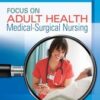
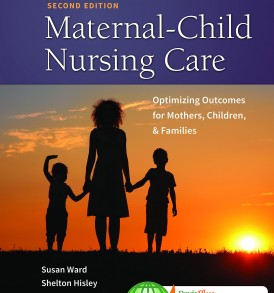


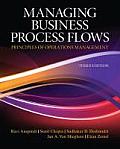


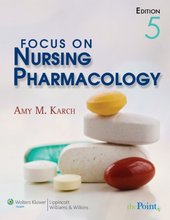

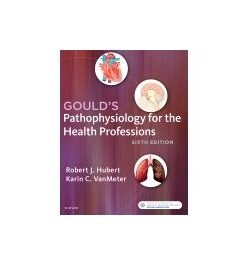
Reviews
There are no reviews yet.